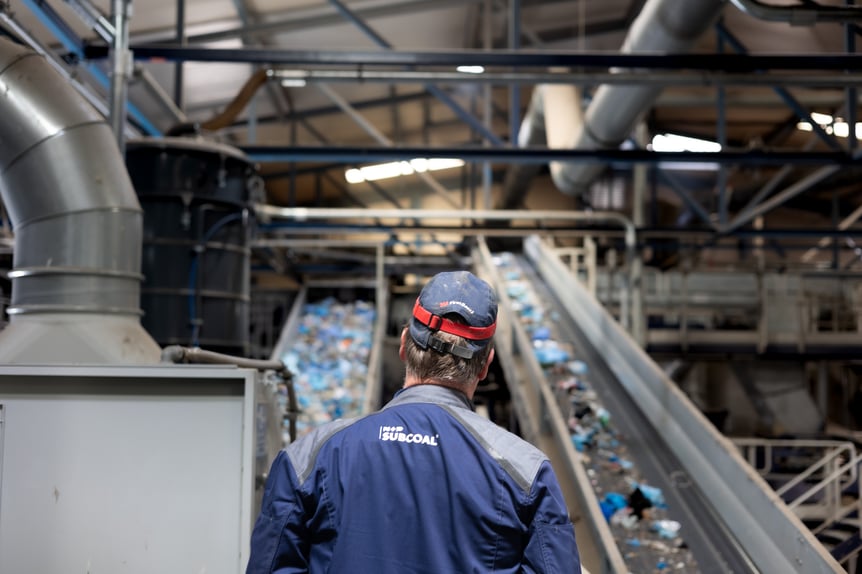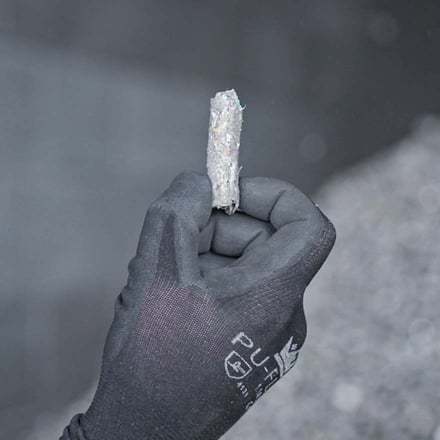Hydrogen has firmly established itself, alongside wind and solar, within the roster of sustainable energy sources propelling the climate and energy transition. Nevertheless, this list remains incomplete because waste also should be seen as a valuable resource for harnessing renewable energy, feedstock and raw materials. This is precisely the role played by N+P Group, focusing specifically on non-recyclable waste.
In European climate strategies, hydrogen has received significant recognition as a novel energy source, and substantial investments are being channeled accordingly. However, it is incomprehensible that waste is still only seen as a problem and not as a valuable solution to the transition we are currently in, as emphasized by Karel Jennissen, the CEO and founder of N+P Group.
"Together with hydrogen and other substitutes to replace fossil fuels, waste can make a noteworthy contribution to the ongoing transition. Failing to fully leverage this potential would be a regrettable oversight."
Of all the sorted waste in the Netherlands, including Plastic, Metal, and Drink cartons (PMD), approximately twenty percent still comprises materials that are non-recyclable. In addition, there are various other waste streams that generally cannot or hardly be sorted for recycling, meaning that part of our waste remains unsorted and cannot be reused. Historically, there were only two final destinations for this waste: it went to landfill or was incinerated. N+P Group successfully introduced a third alternative: converting waste into alternative raw materials, fuels and feedstock, which find application in pre-existing installations across a spectrum of industries that currently rely on fossil fuels.
Subcoal
Subcoal®, as the product is termed, can serve as a viable substitute for replacing fossil raw materials and fuels such as coal. To replace 800 kilograms of coal, 1000 kilograms of Subcoal are requisite, yet this translates into a reduction of over 1,300 kilograms of CO2 emissions. In industries like blast furnaces, power plants, and cement factories - currently reliant on coal - Subcoal can almost entirely power high-temperature processes. This application presents a dual advantage: waste that would otherwise be unusable is repurposed in a more meaningful manner, thereby simultaneously reducing waste and CO2 emissions.
Subcoal comprises nearly fifty percent biomass, primarily wood, generating biogenic CO2. Incorporating Subcoal into production processes enables companies to achieve a substantial reduction in emissions because, akin to pure biomass, the biogenic fraction of CO2 is classified as short-cycle CO2. This makes it an interesting and valuable solution for companies that need rapid emissions reduction.
In countries such as Germany, over 80% of energy requirements in cement factories are fulfilled by alternative energy sources like Subcoal pellets from N+P Group. This alternative energy source is already in use in steel, lime, and cement factories in countries including the Czech Republic, France, and Austria. All subject to stringent European regulations pertaining to emissions.
While these countries have already harnessed waste in ways benefiting both the environment and the economy, opportunities in the Netherlands remain underutilized, as highlighted by Jennissen.
Prevailing legislation and regulations present a formidable barrier
"Regrettably, N+P Group currently contends with the fact that existing legislation and regulations are not tailored for Subcoal's use," Jennissen explains. "It is still categorized as waste, necessitating companies desiring to employ it as a fuel to apply for a waste incineration permit. These procedures are protracted, with an uncertain outcome. This dissuades many prospective companies. Consequently, we aspire to have Subcoal reclassified as a fuel or commodity, rather than waste, subject to the same rigorous (European) emission standards as countries where such usage is already sanctioned. This would enable the Netherlands to capitalize on Subcoal's substantial potential in this energy transition. At that juncture, waste would no longer be viewed as a problem but as an integral part of the solution."
Back to Basics
N+P's product not only provides an alternative solution for current industries but also serves as a circular feedstock for the rapidly emerging Waste to Chemicals sector. Here, waste is transformed back into its original molecular composition through a specialized process, enabling its reuse for new applications. One notable example is Sustainable Aviation Fuel, a form of kerosene produced from waste. However, the quality requirements for this feedstock are exceptionally stringent, and not all forms of unsortable waste are suitable. N+P plays an indispensable role in bridging the divide between worthless waste and valuable circular applications. Factories like those in Farmsum serve as prototypes that can be replicated both within the EU and globally.
This article was published in the Financieele Dagblad (Dutch only)

